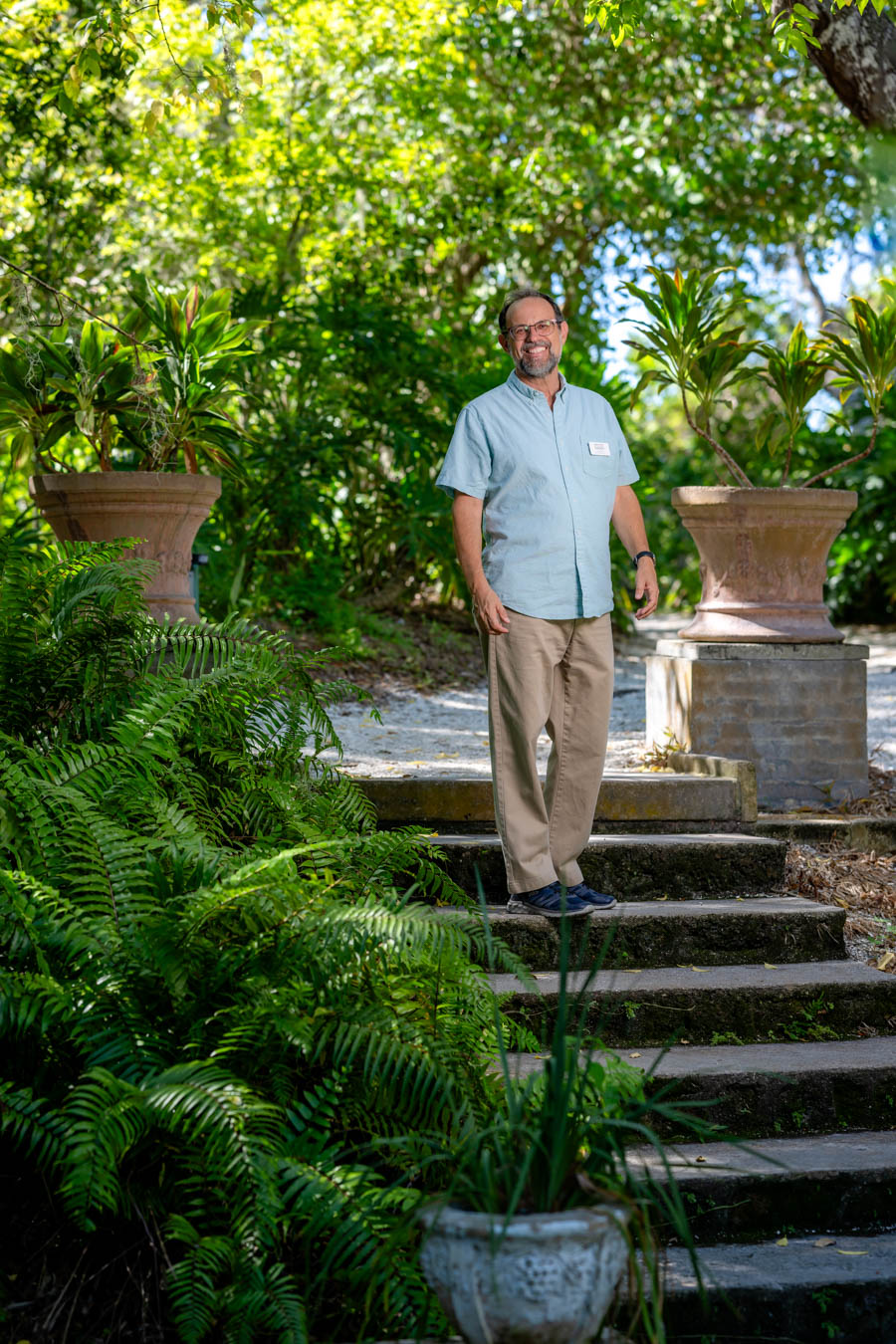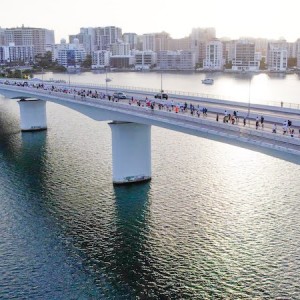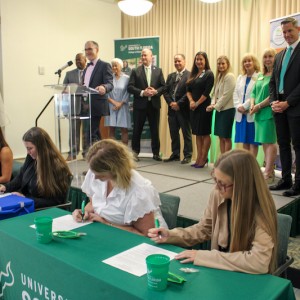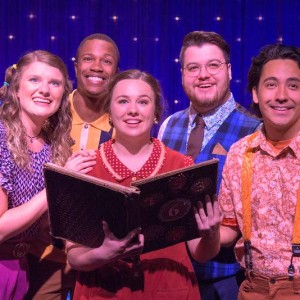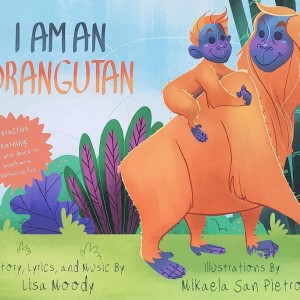Dr. Uzi Baram is a time traveler of sorts. “My passion is to interpret and represent the past,” says Dr. Baram, who in August joined the staff of Marie Selby Botanical Gardens as the Director of Public Archaeology. Dr. Baram comes to Selby Gardens after 25 years of teaching at New College of Florida, where he was a professor of anthropology and created New College’s Public Archeology Laboratory. In 2019, Dr. Baram was awarded the Archaeological Conservancy Award by the History and Preservation Coalition of Sarasota County–he is best known locally for his work in the discovery of the early 19th-century settlement of Angola, a maroon community along the Manatee River that was a haven for escaped slaves and Native Americans deprived of their traditional lands.
Dr. Baram’s arrival at Selby Gardens comes just three years after the organization purchased Historic Spanish Point–a 29 acre museum and environmental complex that is home to some of the area’s most prominent archaeological remnants dating back to nearly 5,000 years ago and lasting two thousand years. The creation of Dr. Baram’s position is twofold: not only is it an attempt by Selby Gardens to better understand and protect the land they now own, but it is also a way to educate the community about the area in only a way that an expert who has spent the better part of two decades studying the land can do.
“This region of Florida is really understudied but contains a really fascinating mix of histories that I felt as a community member people needed to know about,” says Dr. Baram. “There’s just so much here in terms of interesting material, phenomenon and landscapes–between Tampa Bay and Charlotte Harbor we have material remains of humans going back more than 14,000 years. I think sharing that history enlivens this place and as people get to know this heritage they'll have better connections to this place and to each other.”
The land at Historic Spanish Point contains layers upon layers of history–literally. Baked into the ground over the course of thousands of years, lies a prehistoric shell mound or midden, a mound created from the shells of nearby marine life and domestic waste. “At Historic Spanish Point, we have evidence from the Archaic Period, going back nearly 5,000 years and lasting two thousand years, of what’s known as a shell ring–these giant mounds typically found on the coastline around the Southeast. This one is in the shape of a horseshoe with a height of 4.5 meters and a diameter of 140 meters,” says Dr. Baram. “People were living as hunter gatherers and on a seasonal basis, would come to this spot and create these large scale monuments to which they’d return to have festivals, share information, exchange mates and the rest. That went on for thousands of years.”
A large part of what Dr. Baram does at Selby Gardens is interpreting the past–using evidence and contextual clues to determine what might have occurred and how it factors into where we are today. At Selby Gardens, Dr. Baram will not be excavating. He does, however, have enough data to provide theories about what life might have been like 12-20,000 years ago, in the Paleo-Indian period. Today, for instance, we live in the age of rising sea levels. However, 20,000 years ago, during the last Ice Age, the sea levels were much lower–the west coast of Florida would have protruded 50 miles further into the ocean. However, as the glacial ice melted away, those water levels eventually began to rise. “For generations after generations the people of this Paleo-Indian period got used to the coastline coming in. The stories they would tell is that when you went to the coastline it was always closer, however eventually that pattern stopped and the sea levels stabilized until around 30 years ago,” says Dr. Baram. “We’re living in the age of rising sea levels and are trying to make sense of it, it’s a challenge for us. For the archaic era people, the challenge was ‘why isn’t the sea coming towards us anymore?’. It changed. It seems that they marked the coastline with these big monuments and would come once annually, where they would get food from the coast, have big celebrations and check that it hadn’t moved.”
Dr. Baram’s sense is that these monuments or shell middens like the one found at Spanish Point, were used by the people of that time to mark the areas of the coast to show that sea levels had stabilized. In an era of accelerated climate change, it’s not only interesting but critical to look back on how humans dealt with rising sea levels, even if it was thousands of years ago. “In the last 30 years, seas are rising, which means that this area that has been stable for 6,000 years is now getting eroded by wave action. One of the difficult questions is what do we do?” says Dr. Baram. “We’re in a really interesting situation where we can learn from these ancient people how to make sense of climate change and focus on how to deal with it as well.” SRQ
“Seeing something that our team has spent so much time on, collaborating with the various researchers and professors that made the entire project possible, was truly a moment I can state as a highlight of my life,” shares Kakkad. SSEP is a nonprofit created in 2013 by the National Center for Earth and Space Science Education that gives students from fifth grade through college the chance to create an experiment that will be executed in microgravity by astronauts. It begins with students submitting an experiment proposal to their community’s committee, which could be a whole county or town, or individual schools like Pine View, which had around 350 students participating. SSEP Mission 17 received 2,261 submitted proposals and 12,859 participating students in the competition. The selected experiments came from students across the nation and overseas, with one from students in Canada and another from Ukraine.
The group’s experiment tests the effect of microgravity on microalga Chlorella vulgaris and its ability to remove nitrogen and phosphorus from wastewater. The team chose this specific topic because microalga water purification systems could one day make a pivotal contribution to space research. “We take water for granted even though it's not easily accessible for everyone. As we travel to the next frontier, we still need water as a source of fuel. You can go three minutes without air, three days without water and three weeks without food, so we thought ‘why don't we take on those three days?’,” says Suresh.
The sheer wonder of watching the SpaceX rocket launch into space from the Kennedy Space Center in Cape Canaveral took Ratner’s breath away, rendering him speechless in the unforgettable moment that culminated after a year of hard-work and dedication. The group’s teacher, Marie Rosander, shared in the enthusiasm. “The kids were so excited and were jumping up and down the whole time, with their family and teachers there supporting them. Seeing all their hard work and that rocket being launched had me in tears. You can't describe it—it's one of those once-in-a-lifetime opportunities for them, and for me,” she says. “This is what science should be like. If we can inspire students to know that nothing is impossible, that’s what I want from it.”
For the boys, SSEP has given them more confidence in their abilities and more ambition to chase their dreams. “This project has built more confidence in myself and my capability to do big things; it’s a truly amazing and quite rare experience,” says Yellu. After the experiment is completed, the team will write a research paper on their findings, a paper that will be cited by professional scientists in the future, showing how the program not only gives students the ability to learn more about space and science but also take control of their future by working on issues that will be prevalent for the next generation. “It's a wonderful thing to be able to work on real science and send a real experiment to the ISS,” says Ratner. “We're going to get real results, and those results could have long-term impacts. It could alleviate water shortages and help push humanity further into space.”





